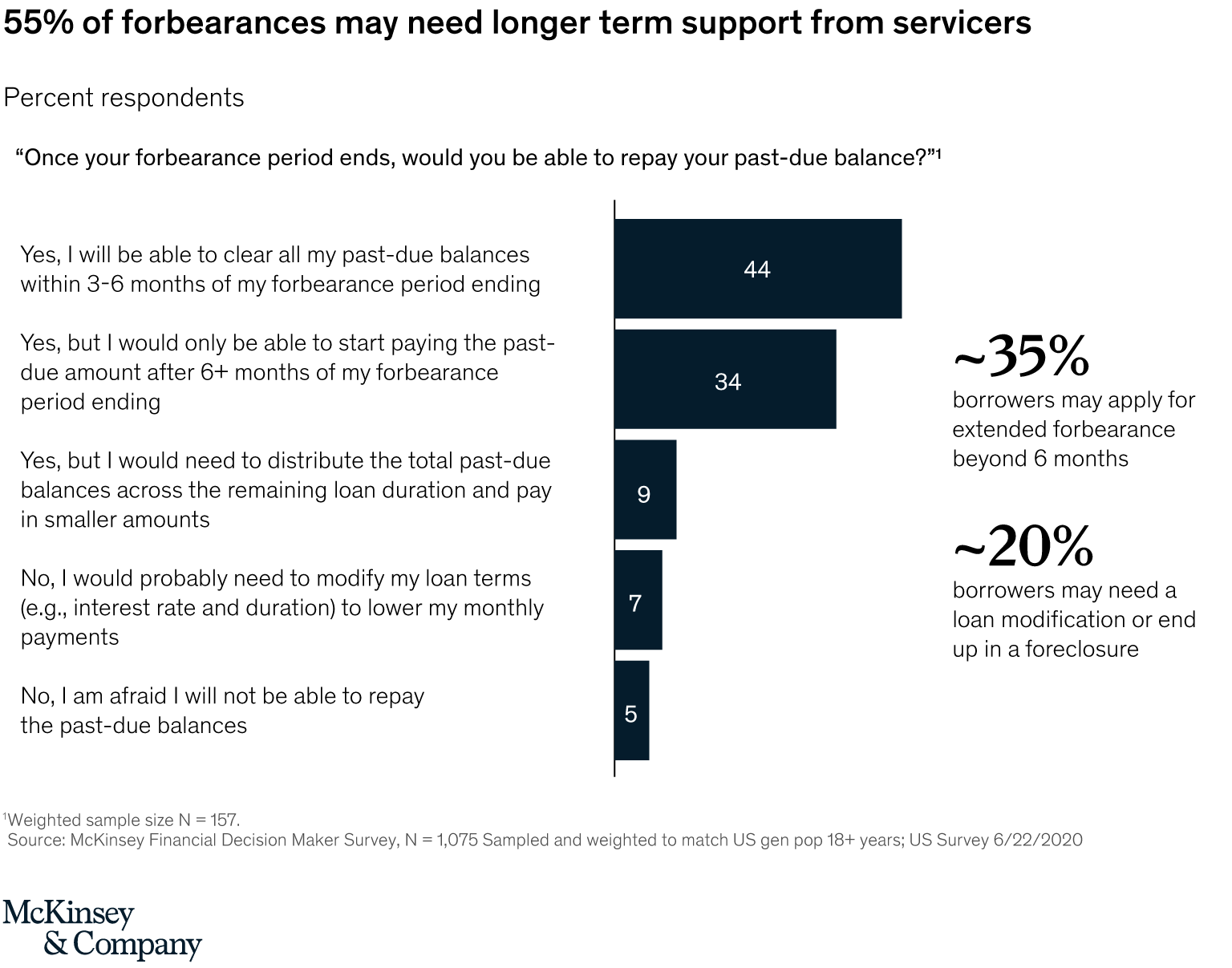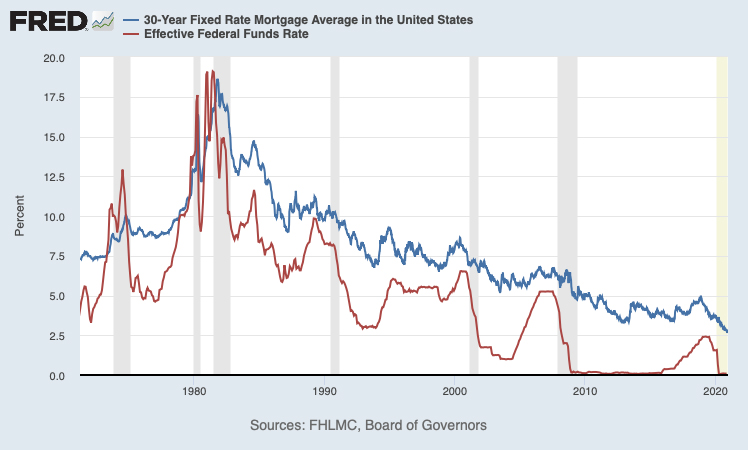For this argument to hold, the increase in the rate of foreclosure would need to precede the decline in house rates. In reality, the opposite happened, with the national rate of home price appreciation peaking in the 2nd quarter of 2005 and the absolute price level peaking in the 2nd quarter of 2007; the significant increase in new foreclosures was not reached up until the 2nd quarter of 2007.
Usually one would anticipate the supreme investors in mortgagerelated securities to enforce market discipline on lending institutions, guaranteeing that losses stayed within expectations. Market discipline began to breakdown in 2005 as Fannie Mae and Freddie Mac became the largest single buyers of subprime mortgagebacked securities. At the height of the market, Fannie and Freddie purchased over 40 percent of subprime mortgagebacked securities.
Fannie and Freddie entering this market in strength significantly increased the need for subprime securities, and as they would ultimately be able to pass their losses onto the taxpayer, they had little reward to successfully keep track of the quality of underwriting. The previous couple of decades have actually seen a significant expansion in the number of financial regulators and regulations, contrary to the commonly held belief that our financial market guidelines were "rolled back." While many regulators may have been shortsighted and overconfident in their own capability to spare our monetary markets from collapse, this stopping working is among regulation, not deregulation.

8 Easy Facts About What Is A Non Recourse State For Mortgages Described
To explain the financial crisis, and prevent the next one, we must take a look at the failure of regulation, not at a mythical deregulation.
So, "what triggered the home mortgage crisis" anyway? In case you have not heard, we went through among the worst real estate busts in our life times, if not ever - what lenders give mortgages after bankruptcy. And though that much is clear, the factor behind it is much less so. There has actually been a great deal of finger pointing. In reality, there timeshare presentation deals 2019 wasn't simply one cause, but rather a mix of forces behind the real estate crisis.
Banks weren't keeping the loans they madeInstead they're were selling them to investors on the secondary marketWho were slicing and dicing them into securitiesThe transfer of risk permitted more risky loans to be madeIn the old days, banks used to make home mortgages in-house and keep them on their books. Since they kept the loans they made, stringent underwriting guidelines were put in location to make sure quality loans were made.
How Is Mortgages Priority Determined By Recording for Dummies

And they 'd lose great deals of money. Recently, a brand-new phenomenon came along where banks and home loan loan providers would stem home mortgage and quickly resell them to investors in the kind of mortgage-backed securities (MBS) on the secondary market (Wall Street). This technique, called the "come from to disperse model," permitted banks and lenders to pass the threat onto investors, and thus loosen guidelines.
Banks and loan providers likewise relied on circulation channels outside their own roof, by means of home mortgage brokers and correspondents. They incentivized bulk originating, pushing those who worked for them to close as many loans as possible, while forgeting quality requirements that made sure loans would in fact be repaid. Since the loans were being sliced and diced into securities and offered wholesale, it didn't matter if you had a couple of bad ones occasionally, a minimum of not initiallyThis pair wasn't free from blame eitherThey were quasi-public companiesThat were attempting to keep private financiers happyBy alleviating underwriting guidelines to stay relevantOf course, banks and lenders designed their loan programs on what Fannie and Freddie were buying, so one could likewise argue that these 2 "government-sponsored business" likewise did their reasonable share of harm.
And it has been alleged that the set reduced standards to remain relevant in the home mortgage market, mostly since they were openly traded companies progressively losing market share to private-label securitizers. At the exact same time, they likewise had lofty affordable real estate objectives, and were instructed to provide financing to more and more low- and moderate-income debtors with time, which plainly came with more danger.
More About School Lacks To Teach Us How Taxes Bills And Mortgages Work
As an outcome, bad loans appeared as higher-quality loans since they complied with Fannie and Freddie. how did clinton allow blacks to get mortgages easier. And this is why quasi-public companies are bad news folks. The underwriting, if you might even call it thatWas atrocious at the time leading up to the mortgage crisisBasically anybody who made an application for a house loan might get approved back thenSo once the well ran dry many of these property owners stopping payingThat brings us to bad underwriting.
They were often told to make loans work, even if they seemed a bit dodgy at best. Once again, the reward to approve timeshare deals the loan was much, much greater than decreasing it. And if it wasn't authorized at one store, another would be happy to come along and take business.
So you could get away with it. The appraisals at the time were likewise extremely suspectEmphasis on "high" instead of lowSince the values were typically grossly inflated to make the inferior loan workThis further propped up home rates, allowing for much more bad loans to be createdGoing together with bad underwriting was faulty appraising, often by deceitful house appraisers who had the exact same reward as loan providers and originators to make sure the loans closed.
The Buzz on What Is The Highest Interest Rate For Mortgages
If one appraiser didn't like the worth, you might constantly get a consultation somewhere else or have them reevaluate. Home prices were on the up and up, so a stretch in value could be concealed after a couple of months of appreciation anyhow. And don't forget, appraisers who found the ideal worth each time were ensured of another deal, while those who couldn't, or would not make it occur, were missed on that next one.
Back when, it prevailed to put down 20 percent when you acquired a home. In the last few years, it was progressively typical to put down 5 percent or perhaps absolutely nothing. In reality, zero down house loan funding was all the rage since banks and customers could count on home cost gratitude to keep the idea of a home as an investment feasible.
Those who bought with absolutely no down simply picked to leave, as they actually had no skin Visit website in the video game, nothing to keep them there. Sure, they'll get a huge ding on their credit report, however it beats losing an entire lot of cash. Alternatively, those with equity would definitely install more of a fight to keep their house.
The Of What Is The Concept Of Nvp And How Does It Apply To Mortgages And Loans
As home costs marched higher and higher, lending institutions and home contractors needed to come up with more innovative financing options to generate purchasers. Because home prices weren't going to boil down, they needed to make things more cost effective. One approach was reducing regular monthly home mortgage payments, either with interest-only payments or negative amortization programs where customers in fact paid less than the note rate on the loan.
This naturally resulted in scores of underwater borrowers who now owe more on their home loans than their existing home worths - how to rate shop for mortgages. As such, there is little to any reward to remain in the house, so customers are increasingly defaulting on their loans or walking away. Some by choice, and others since they might never afford the real regards to the loan, only the initial teaser rates that were offered to get them in the door.